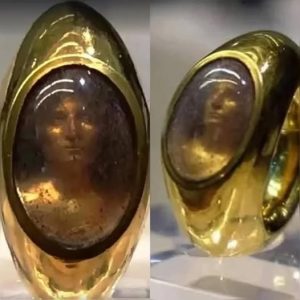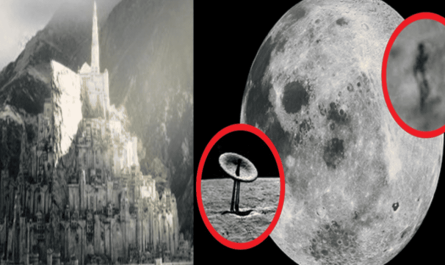Imagine holding a piece of history in your hand, an object crafted nearly two millennia ago, imbued with personal sentiment and showcasing an astonishing level of artistic and technical skill. This isn’t a scene from a historical fiction novel, but the reality surrounding a recently uncovered Roman gold ring found in the tomb of a woman named Aebutia Quarta, near the ancient heart of Rome. This extraordinary artifact, now housed in the Museo Archeologico Nazionale di Palestrina, offers us a captivating glimpse into the lives and artistry of the ancient Romans.

More than just a beautiful adornment, this ring is a testament to the profound artistry of Roman craftsmen. Fashioned from gleaming gold, its centerpiece is a meticulously carved rock crystal. But this is no ordinary gemstone. The crystal bears the delicate likeness of a young boy, identified by an inscription on the back as Titus Carvilius Gemello, the son of Aebutia Quarta. This personal touch transforms the ring from a mere piece of jewelry into a poignant memorial, a tangible expression of a mother’s love that has survived the passage of centuries.
What truly sets this ring apart is the sophisticated technique employed in the carving of the rock crystal. Roman artisans possessed a deep understanding of optics, utilizing their skills to manipulate light in a way that creates a remarkable “holographic” effect. This wasn’t a literal hologram as we understand it today, but rather a masterful engraving that, when viewed under the right light, would have given the image of Titus Carvilius Gemello an almost lifelike, three-dimensional quality. This level of detail and technical prowess is astounding, highlighting the advanced techniques that were within the grasp of Roman craftsmen during this period.
The discovery of this ring in the tomb of Aebutia Quarta adds another layer of intrigue to the artifact. It suggests that this was a cherished possession, perhaps worn daily or specifically placed within the burial as a significant memento. The act of depicting a loved one in such an intricate and enduring form speaks volumes about the personal connections and emotional lives of individuals in ancient Rome.
Today, visitors to the Museo Archeologico Nazionale di Palestrina have the privilege of witnessing this exceptional piece firsthand. It serves not only as a stunning example of ancient Roman jewelry but also as a powerful reminder of the individuals who lived and loved in that era. The remarkable craftsmanship, the personal inscription, and the ingenious use of light all converge to create an artifact that continues to mesmerize and offer a rare glimpse into the artistry and technological prowess of ancient Rome.
The Roman gold ring of Aebutia Quarta is more than just an archaeological find; it’s a story etched in gold and crystal, a whisper from the past that continues to resonate with us today. It reminds us that even across millennia, the desire to remember and cherish loved ones, coupled with exceptional skill and artistry, can create objects of enduring beauty and profound historical significance. This remarkable ring truly is a jewel from the past, illuminating the ingenuity and personal lives of those who shaped the world we inhabit today.


